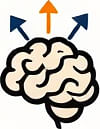Strategic Risk Assessment for Building a High-Agency Mindset
 by Lilian Nienow
by Lilian Nienow
Discover practical drills and strategies to master strategic risk assessment and foster a high-agency mindset. This guide offers actionable steps for ambitious professionals to take control of decisions and drive personal growth through proactive risk management.

Developing a high-agency mindset begins with learning to handle risks strategically. This approach empowers individuals to make decisions that shape their paths forward. For ambitious professionals, integrating strategic risk assessment into daily routines builds confidence and resilience.
First, consider the core elements of strategic risk assessment. It involves identifying potential obstacles and opportunities in advance. By doing so, you create a foundation for informed choices. This process helps turn uncertainty into a tool for growth, allowing you to act with purpose.
To start, practice simple drills that sharpen your ability to spot risks early. One effective exercise is the daily review method. At the end of each day, reflect on decisions made and potential pitfalls encountered. This builds awareness and prepares you for future challenges. Through consistent practice, you enhance your capacity to anticipate issues before they arise.
Another key strategy is prioritizing risks based on impact. Begin by listing possible risks in your personal or professional life. Then, rank them according to their potential effects. This method ensures you focus on what matters most, fostering a sense of control. High-agency mindset thrives when you allocate resources wisely to address critical areas.
Now, let's explore specific strategies for mitigating identified risks. One practical technique is scenario planning. Imagine different outcomes for a decision and prepare responses for each. This exercise trains you to adapt quickly, turning potential setbacks into learning experiences. By applying this regularly, you cultivate the ability to stay ahead.
Incorporate team-based drills for broader applications. If you're in a professional setting, collaborate with colleagues to assess shared risks. Discuss various perspectives and develop collective plans. This not only strengthens group dynamics but also reinforces your individual decision-making skills. Remember, a high-agency approach means leading by example in group environments.
Personal development through strategic risk assessment also includes tracking progress. Maintain a journal to record your assessments and outcomes. Over time, patterns emerge, revealing strengths and areas for improvement. This ongoing practice solidifies your proactive habits, making risk management second nature.
For instance, consider a career transition as a real-world example. Before making a move, assess financial risks, skill gaps, and market conditions. Weigh these factors to create a step-by-step plan. Such preparation empowers you to proceed with confidence, minimizing regrets and maximizing success.
Building these skills requires commitment. Set aside time each week for dedicated practice sessions. Start with short, focused exercises and gradually increase complexity. This incremental approach ensures steady progress without overwhelming you.
Additionally, use visualization techniques to reinforce your strategies. Picture yourself navigating a risk successfully and the positive results that follow. This mental rehearsal boosts motivation and prepares you mentally for real situations.
To deepen your high-agency mindset, combine risk assessment with goal setting. Align your strategies with long-term objectives. For example, if your goal is to advance in your career, assess risks related to skill development or networking. This integration makes your efforts more targeted and effective.
Overcoming common challenges in strategic risk assessment is crucial. One issue is overthinking, which can lead to inaction. Counter this by setting time limits for assessments. This keeps you moving forward while staying informed.
Another challenge is emotional bias. Learn to recognize how feelings influence your evaluations. Practice objective analysis by relying on data and facts. Through these adjustments, you maintain clarity and control.
Finally, celebrate small victories along the way. Each successful risk assessment reinforces your growth. This positive reinforcement motivates continued effort, solidifying your high-agency mindset for the long term.
In summary, strategic risk assessment serves as a powerful tool for personal and professional development. By engaging in practical drills and strategies, you take charge of your decisions and build resilience. Commit to these practices today and watch your confidence soar.
